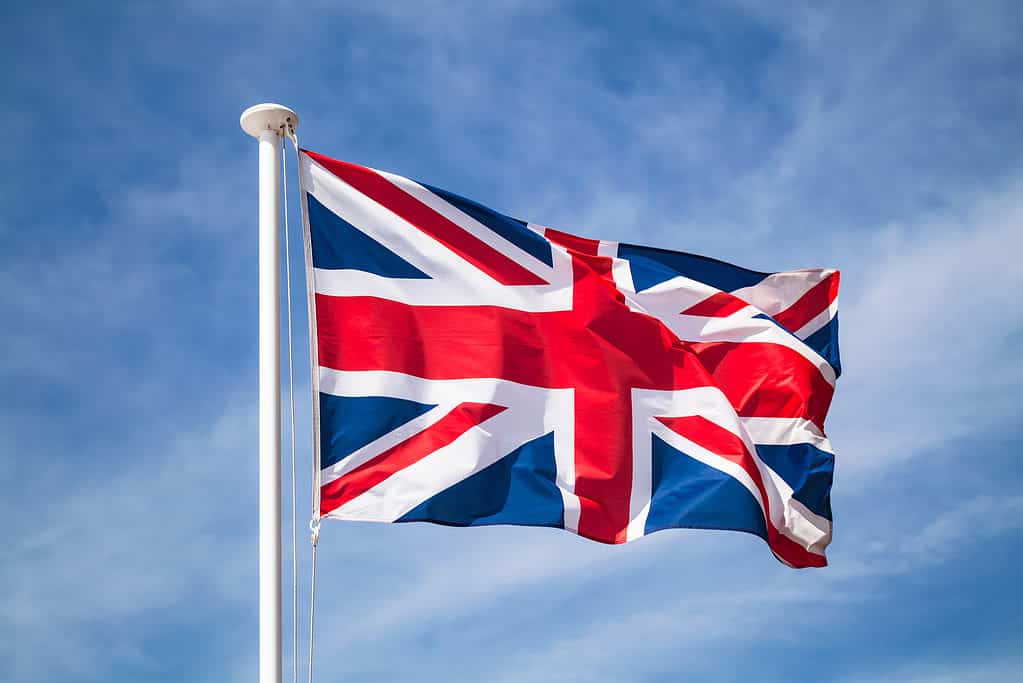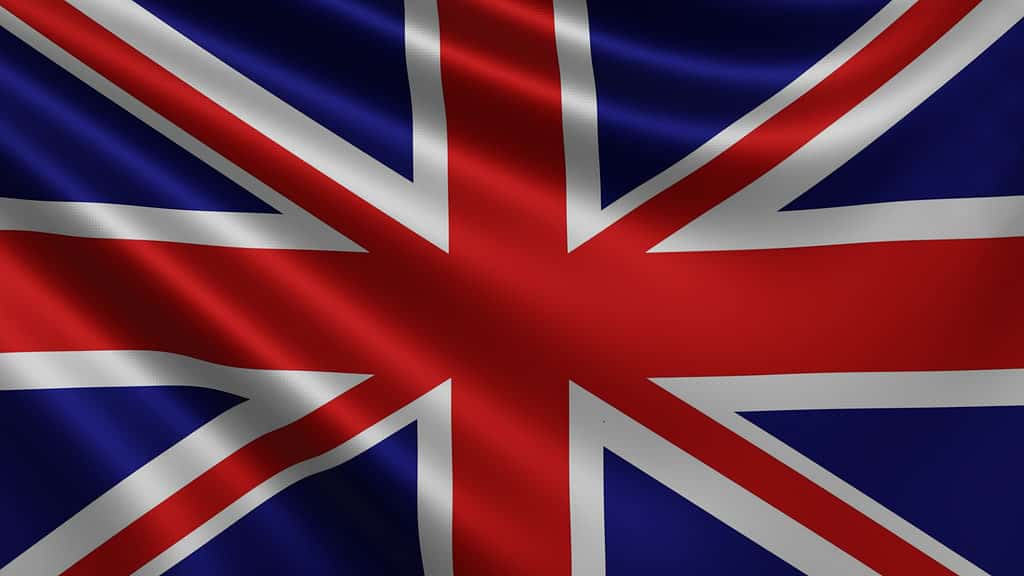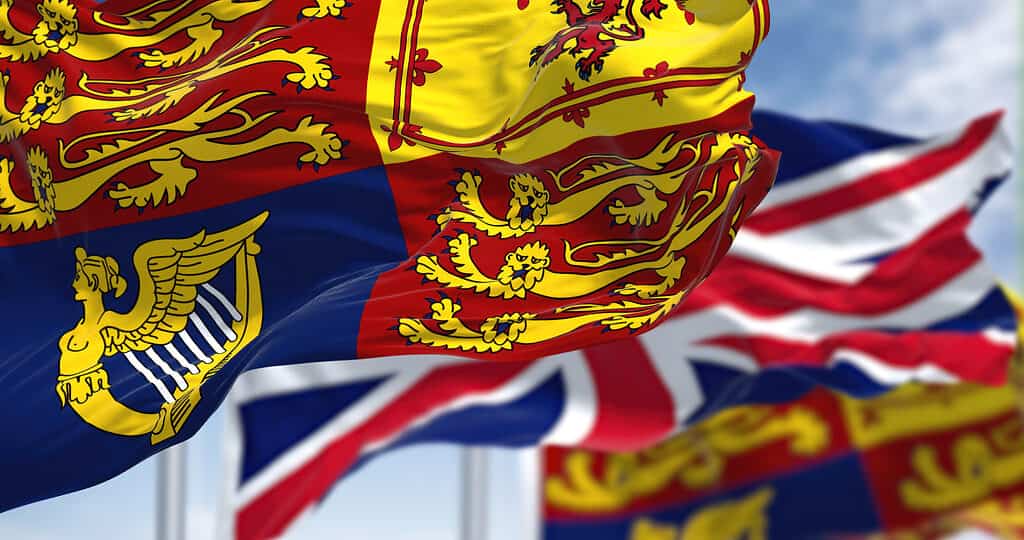The British flag is one of the major emblems of the British Empire. Twenty-three countries around the world use it in some form for various official and ceremonial purposes. Designed by King James I, its colors represent the four nations of the United Kingdom. A country’s flag depicts what the country stands for and is considered a thing of pride for every nation. The British flag is one of Britain’s most prominent symbols of authority and has existed for centuries. Like most other flags, the colors and symbols on the British flag are subtle references to its past and also showcase the country’s present ideals. This article details the origin, history, and symbolism of the British National Flag, otherwise known as the Union Jack.
The British Flag — Origin and History
The Union Jack is rooted in British history and goes as far back as more than 400 years ago. On March 24, 1603 (the day the British and the Scottish crowns merged into one), King James I became the ruler of Britain and Scotland. He took over the throne after the passing of his cousin, Queen Elizabeth I, who died unmarried and childless.
Six years into his reign, the king declared that one national flag would represent the newly united kingdom. He went on to design the flag by himself using the Saltire of Scotland and the St George’s Cross of England.
The Irish harp was added during the commonwealth protectorate era from 1649 to 1660, but it was removed in 1660 under the reign of Charles II. Wales was also represented in the St George’s flag since it was already a part of England at the time.
Sometime in the nineteenth century, the Act of Union brought Ireland into the fold, and the St Patrick’s Cross was added to the flag to provide Irish representation. Thus, the Union Jack that is currently used today was born. The flag is outstanding in design, and the fact that it is a symbol of different nationalities merged into one makes it more impressive. The British flag has largely remained the same since 1801.
The royal family has explained that there is no Welsh representation on the Union Jack flag because Wales was already a British principality at the time of designing the flag. Wales is, however, represented on the British coat of arms.

The British flag has largely remained the same since 1801 and is a symbol of different nationalities merged into one.
©iStock.com/eugenesergeev
The Symbolism of the British Flag
The Union Jack is the greatest symbol of the union between the four countries of the United Kingdom. Holding the flag is seen as one of the most recognizable ways of displaying the ideals of patriotism and dedication to British nationalism. One of the most interesting things about the British flag is that it is four flags wrapped in one. It includes the English flag and three other flags — the flags of Scotland, Wales, and Northern Ireland.
Four Flags in One
The differences may not be obvious to the untrained eyes, but it is possible to separate the individual elements that make up the flag. It is essentially three clearly defined crosses, with each one representing the patron saint of each nation.
England’s patron saint is Saint George and is represented by a red cross on the Union Jack. Wales’ patron saint is represented by a white cross, but it is not visible on the flag because it is on a white background. Scotland’s patron saint is Saint Andrews, represented on the flag as a diagonal white cross on a navy blue background. For Northern Ireland, the patron saint is Saint Patrick, and this is depicted by a diagonal red cross on a white background.
Each color and symbol on the flag has a unique meaning too. The color white symbolizes purity, truth, and innocence. Red is a symbol of warriorhood, martyrdom, and strong military prowess. Blue represents vigilance, justice, loyalty, and power.

The British flag is actually four flags wrapped in one as it includes the English flag and the flags of Scotland, Wales, and Northern Ireland.
©iStock.com/IFest
Flying the Flag
Because of the seemingly symmetrical shape of the British flag, it’s difficult to say when it is upside down or up the right way. However, one can tell which way is up by observing the white lines above and below the diagonal red one since they come in different widths. Although there are no official rules for this, the Union Jack should always be flown the right way up. Flying it upside down is offensive to some people. However, it may be used as a distress signal in rare cases.
The British flag may have different meanings based on how it is used or hoisted. On important days like the opening of Parliament or St Andrews’ day, the flag is hoisted and flown high. For authorized military and diplomatic uses, it can be incorporated into another flag. For instance, the Union Jack is part of the flags of other commonwealth nations like Australia, Tuvalu, New Zealand, the US Hawaii state, and the Canadian provinces of Ontario, Manitoba, and British Columbia.
The Royal Standard Flag
The Royal Standard flag of the United Kingdom refers to the flag used by the monarch in his/her capacity as the sovereign. It differs from Union Jack in that it is flown when the reigning monarch is in residence, on a ship or an airplane. It is also flown on any public or private building where the monarch is present. When the monarch visits the state parliament opening, it replaces the Union Jack over the palace of Westminster.
Only the Westminster Abbey church has the power to fly the Royal Standard without the monarch’s presence. The Royal Standard flag revolves around the monarch’s power, while the Union Jack represents the countries. The Royal Standard flag was draped over the queen’s coffin when she died in 2022.

The Royal Standard flag of the United Kingdom is flown when the reigning monarch is in residence, on a ship or an airplane.
©iStock.com/rarrarorro
Why is the British Flag Called the Union Jack?
There are many theories about how the flag came to be known as the Union Jack. The confusion for most people is with the “Jack” part of the nickname since the use of the word “Union” shows that the flag represents the four nations of the United Kingdom. The name Union was first used in association with the flag in 1625. Thus, the earliest nickname for this British flag is the Union flag.
So how did the “Jack” come in? Generally, the word “Jack” was in use long before the British flag was designed. It referred to a small flag hoisted on a warship or a group of ships. After the flag was designed, it was known as the Union Flag when used on land and Union Jack when mounted on a ship. By 1674, the name “Union Jack” was officially acknowledged.
Only the Union Jack can be flown at half-mast during a period of national mourning, such as the passing of a royal family member or a British prime minister. The Royal Standard flag is never flown at half-mast because there is always a sovereign ruler on the throne. The sovereignty of the monarch is viewed as something immortal and never-ending.
Government buildings are mandated to fly the Union Jack on royal birthdays, Commonwealth day, coronation day, monarch’s birthdays, remembrance day, and other state-related events. More recently, the Union Jack is flown more frequently (almost all year round) and not just on special occasions.
Conclusion
The British flag is one of the most recognizable flags in the world. It is a symbol of power, sovereignty, and prestige. It is also internationally-relevant thanks to the bilateral relations and historical relationship between the United Kingdom and other countries all over the world. The flag is crucial to the British Empire and must be treated with the utmost respect.
Up Next
- Blue Flag with Yellow Cross: Sweden Flag History, Symbolism, and Meaning
- The Flag of Uzbekistan: History, Meaning, and Symbolism
- The Flag of Liberia: History, Meaning, and Symbolism
- The Flag of Falkland Islands: History, Meaning, and Symbolism
The photo featured at the top of this post is © iStock.com/NirdalArt
Sources
- Wikipedia, Available here: https://en.wikipedia.org/wiki/Flag_of_the_United_Kingdom
- Wikipedia, Available here: https://en.wikipedia.org/wiki/Union_Jack
- Royal.uk, Available here: https://www.royal.uk/union-jack
- Britannica, Available here: https://www.britannica.com/topic/flag-of-the-United-Kingdom
Thank you for reading! Have some feedback for us? Contact the AZ Animals editorial team.






